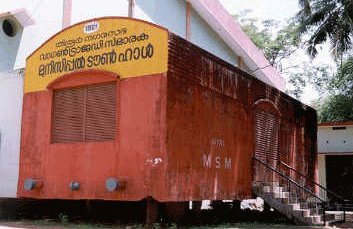The history of Indian currency can be traced back to ancient times when cowrie shells were used as a medium of exchange. Over time, various types of coins were introduced by different rulers in India, such as the Mauryas, Guptas, and Mughals. The coins were made of various metals, including gold, silver, and copper, and featured inscriptions of the ruler’s name and title.
During the British rule in India, the East India Company started issuing paper currency in the late 18th century. The first paper currency was called the ‘Company Rupee’ and was introduced in 1770. In 1861, the British government introduced the ‘Victoria Portrait Series’ of banknotes, which featured a portrait of Queen Victoria.
After India gained independence in 1947, the Reserve Bank of India (RBI) was established in 1935 and took over the responsibility of issuing currency. The first series of Indian rupee banknotes under the RBI was called the ‘King’s Portrait Series,’ which featured a portrait of King George VI. The banknotes were issued in various denominations, including Rs. 1, Rs. 2, Rs. 5, Rs. 10, Rs. 100, and Rs. 1,000.
In 1953, the Indian government introduced a new series of banknotes called the ‘Lion Capital Series,’ which featured the Lion Capital of Ashoka, a national emblem of India. The banknotes were issued in denominations of Rs. 1, Rs. 2, Rs. 5, Rs. 10, Rs. 100, and Rs. 1,000.
In 1969, the Indian government introduced the decimal system of currency, which replaced the previous system of 16 annas to the rupee. The new system introduced the concept of paisa, with 100 paisa making one rupee. The first series of banknotes under the new system was called the ‘Mahatma Gandhi Series,’ which featured a portrait of Mahatma Gandhi, a leader of the Indian independence movement.
Over time, various new series of banknotes were introduced, such as the ‘Indira Gandhi Series,’ ‘RBI Monetary Museum Series,’ and the ‘New Mahatma Gandhi Series.’ The current series of Indian rupee banknotes, called the ‘Mahatma Gandhi New Series,’ was introduced in 2018 and features several new security features, such as a latent image, a see-through register, and a denominational numeral in Devanagari script.
In conclusion, the evolution of Indian currency over the centuries reflects the country’s rich cultural and historical heritage, as well as its economic development and progress.
Indian Currency now
The Indian currency in circulation today is the Indian rupee (INR), which is issued and regulated by the Reserve Bank of India (RBI), the central bank of the country. The rupee is divided into 100 smaller units called paisa, and is available in denominations of Rs. 1, Rs. 2, Rs. 5, Rs. 10, Rs. 20, Rs. 50, Rs. 100, Rs. 200, Rs. 500, and Rs. 2,000.
The current series of Indian rupee banknotes is called the ‘Mahatma Gandhi New Series,’ which was introduced in 2018. The banknotes feature a portrait of Mahatma Gandhi, a leader of the Indian independence movement, and several new security features to prevent counterfeiting, such as a see-through register, a latent image, and a denominational numeral in Devanagari script.
In addition to banknotes, the RBI also issues coins in various denominations, including Rs. 1, Rs. 2, Rs. 5, and Rs. 10. The coins feature the national emblem of India on one side and various designs on the other side, such as the Lotus, the Ashoka Pillar, and the portrait of Mahatma Gandhi.
Overall, the Indian currency system is stable and well-regulated, and the Indian rupee is widely accepted as a medium of exchange in India and other countries. The RBI regularly monitors and regulates the supply of currency to ensure price stability and economic growth in the country.



